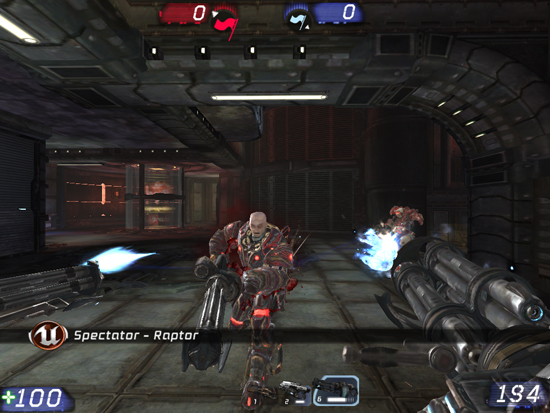AMD 780G: Preview of the Best Current IGP Solution
by Gary Key on March 10, 2008 12:00 PM EST- Posted in
- CPUs
Quick Thoughts
The AMD 780G platform offers significantly lower CPU utilization rates than the G35 in our H.264 playback tests while jockeying back and forth with the GeForce 8200. VC1 and MPEG-2 playback was certainly lower on the 780G/GeForce 8200 platforms, though the G35 was at least in the same ballpark. Intel has made some strides with the 15.8 drivers in regards to MPEG-2 playback and overall image quality. Our experiences with the 15.9 driver are even better, but we will have to wait until the G45 for a true competitor to the AMD chipset previewed today when comparing hardware accelerated decode capabilities.
More important than the raw numbers is that throughout testing, neither the 780G nor GeForce 8200 once experienced pausing, judder, or outright blank screen events - something we cannot say about the G35. Certainly, our processor choices have a significant impact on CPU utilization rates, but considering our two choices are priced equally we have to give the nod to AMD for having a better media solution in this price range. As far as power consumption goes during H.264 playback, the AMD platform averaged 106W, NVIDIA platform at 102W, and the Intel platform averaged 104W - too close to really declare a true winner.
The G35 and GeForce 8200 certainly hold an advantage when it comes to providing multi-channel LPCM audio over the HDMI interface, and that one item is enough for us to go back to our original opening comments that AMD got it right... almost right. From an HTPC perspective, it is hard to argue with the video results from the HD 3200, but the audio capabilities of the G35 and GeForce 8200 still sway us at times to the other side.
After testing nearly non-stop over the past two weeks, we think the 780G is the better overall solution and are still amazed that AMD made such a significant jump in IGP performance in such short time. Our comments come from reviewing the results from close to two dozen benchmarks and a general maturity in the platform at this moment, something we could not have said when our first boards arrived a few weeks ago.
The only wild card at this point is the NVIDIA GeForce 8200 as it appears to be very close to the 780G in multimedia performance, but gaming and application capabilities are lagging a little in early testing. Whether this is due to an immature BIOS, chipset limitations, or drivers is up for debate at this point (Ed: calling 1-800-NVIDIA, please pick up). We will have full results for this chipset in our roundup, but considering most boards based on the MCP78 are not due for another month, we have to tip our hats to AMD for better market execution at this point.
The Intel G35 platform will show its strength in areas like office applications and video/audio encoding thanks to the Core 2 processor family. However, it has an Achilles heel that keeps it from being an all around champion. Besides dismal H.264 decoding abilities with low-end processors, casual gaming is an almost complete disaster on this platform. This is an area we will report on thoroughly in our next article. In the meantime, we leave you with these screenshots to ponder which platform is best suited for that casual gamer in the household.
Unreal Tournament 3 - 1024x768 Medium Quality Settings
 780G at 24.3 FPS - Click to Enlarge |
 G35 at 2.6 FPS - Click to Enlarge |
 GeForce 8200 at 19.2 FPS - Click to Enlarge |










49 Comments
View All Comments
Gary Key - Tuesday, March 11, 2008 - link
The 790GX features the HD 3300, which is a slight upgrade to the HD 3200 on the 780G. We are told the IGP performance differences will be slightly improved, but until we have the chipset and drivers, it will be difficult to determine if those improvement are meaningful or not. At this time, AMD is quiet about actual specs and capabilities of the 790GX. If you are a very casual gamer, Sims2/UT2004/CoH type of games then Hybrid CrossFire is a decent solution up to 1280x1024 resolution. If you want to run upcoming games and Crysis at an acceptable rate, then discreet graphics is the way to go.At this time, if you want an uATX form factor, the 780G is the best AMD chipset for discrete graphics performance. I have not found any real difference in performance between it and a 770X board with a HD 3870 installed. You need to go up to the 790FX for the best performing chipset with an AM2+ CPU right now. I will update this if we get a performance oriented BIOS for the GeForce 8200 board which may or may not changes its performance capabilities.
Genx87 - Monday, March 10, 2008 - link
Maybe it is late.What is the expected cost and release date of this motherboard?
Gary Key - Tuesday, March 11, 2008 - link
The reader who responded basically answered the supply and price question. :) NewEgg was running a special on the ECS board this week for %59.99 with a rebate. Our information is that all of the launch partners for this board should have supply in the channel by the end of March or early April at worst. The feature sets will determine the prices but AMD was shooting for an average street price of $75 on the 780G. The 780V will be a white box or OEM only SKU for now.The J&W board will not be available in the US or Canada at this time. It is the only board we have in-house that offers the SidePort memory option and with the latest 8.3 drivers, it makes a 5%~10% difference in a few games. AMD is telling us the final 8.4 drivers should allow this option to assist in lowering CPU utilization by a few percent also.
goinginstyle - Tuesday, March 11, 2008 - link
The Gigabyte, ASUS, and ECS boards are available (if in stock) in the Americas at prices ranging from $69 to $99. In Europe and APAC, the J&W boards (along with the others) are available currently. The J&W will be our choice for the more performance oriented user. We expect to see boards from Biostar, abit, MSI, and Foxconn shortly at prices under $100, average MSRP for this chipset should be around $80 once supply is plentiful.goinginstyle - Tuesday, March 11, 2008 - link
Hit the enter button too soon but that information is from another website that will not be mentioned just in case it is a violation of the rules here. I bought the Gigabyte board from NEWEGG last week for $95 and found out today that the 780G chipset shows ENG0752 on it. Any comments on your boards having ENG chipsets?eches - Monday, March 10, 2008 - link
BUT sadly almost useless to me since all my HTPC builds run Linux. It would be VERY interesting to see a comparison in terms of Linux to Windows playback quality/performance since the drivers are bound to make a huge difference here.Also some interesting comments - my Linux HTPC runs an XP2600 (OC to 2.1 Ghz) and only just manages to handle 720p MKV playback. Can a Sempron at 1.8Ghz really manage 720p under Windows? Might be time for an upgrade *grin*
phusg - Tuesday, March 11, 2008 - link
Your hardware should be plenty to playback 720p video. If only something as efficient as CoreCodec's CoreAVC was available for linux. What do you presently use to playback? Is the playback totally smooth?It's also a shame the hardware acceleration of HD video on the newer AGP cards isn't available on the linux side, that would be another cheap way to stretch your hardware :)
eches - Wednesday, March 12, 2008 - link
Smooth at 2.13Ghz, but with some sound sync issues - this is with Xine and all de-interlacing/post-processing disabled (and minimal background processing). And indeed I am awaiting the CoreAVC player for Linux (yes, I could patch MPlayer but I'm also trying to keep the HTPC low maintenance) since this is a quick and cheap way of making the most of this old hardware.And cheers Gary! I look forward to the Linux article with GREAT interest - will you also be taking a look at NVidia cards and doing a quality comparison?
Gary Key - Tuesday, March 11, 2008 - link
We just shipped a 780G board to one of our upcoming Linux editors to test. We should have some initial results in the next couple of weeks. I have not had a pleasurable experience with the Sempron 3400+ doing encoding/decoding work on this board under Vista. It is something I am still working on for a future HTPC article, one that we will recommend/show just how low you can go with the new IGP boards and still have a "well performing" system. Does a Sempron 3400+ and a HD 3450 card for a total outlay of $85 offer better performance on this board than a 4850e CPU only for the same price. This is something we are trying to answer with Intel, NVIDIA, and AMD hardware.eches - Wednesday, March 12, 2008 - link
Sorry I had tacked on a "cheers" at the end of the reply further down - GREAT stuff!"How Low Can You Go?" eh? Sounds very interesting but complex if done properly (i.e. Tests on Vista, XP and Linux; and a need to cover quite a few players in order to do quality/performance comparisons). A look at power consumption would also add an interesting slant - *possibly* putting XP/Vista in a different light when once considers TCO and Linuxs often poor power management.
Personally I was surprised to get a XP2600 to play 720p content and could probably get it smooth without an OC if I used CoreAVC and a dedicated sound card. Given we're talking 6 year old 'junk' hardware here, a free OS etc. thats pretty low!